In the flabbergasted words of Shelia Broflovski of South Park, I was like, “What–what–WHAAT?!!”
I’d read the news and, yes, it was finally true.
David Lean’s 1962 film Lawrence of Arabia, one of my all-time favorite movies since childhood, and an Oscar-laden epic beloved by generations of viewers, adored by legions of film geeks and praised by snooty critics and film scholars alike, is finally—officially—coming to Blu-ray.
This is excellent news!
The granddaddy of sweeping giant-scale human epics, Lawrence underwent a highly publicized restoration and 70mm theatrical reissue in 1989, so I’m psyched to hear Sony has given it a further restoration and a rare 4K treatment for the upcoming Blu-ray edition. (A limited theatrical reissue is happening, too!) But considering early Sony promo spots for Blu-ray touting “Lawrence in high-def!” have teased its (non)existence on the format for years, since way back when Blu-ray was still embroiled in a very uncertain war with fledgling format HD-DVD, I’d say it’s about gosh-darned time this cinematic treasure was finally available on Blu-ray!
I gladly scratched it off my list of “Favorite Films Not Yet On Blu” and so we’ll let bygones be bygones, but let’s acknowledge the affront to film lovers everywhere that Sony actually issued a 1080p Blu-ray of the waterlogged adventure The Deep years before they finally got around to performing a proper high-definition preservation of their crown jewel, Lawrence of Arabia. Even the pharaohs weep.
In cobbling together a discussion of some other highly egregious omissions from the Blu-ray catalogue, I tried to avoid the claptrap of resorting to a List of Ten. Plus there are way more than ten important movies that are blatantly absent from Blu-ray.
While grouping and sorting the titles, it became immediately apparent that a “trilogy” theme dominated. Some are obvious collectives, but some form accidental trilogies—and some more striking than others to boot.
None of ’em are yet available on Blu-ray, and in each case that’s a crying shame.
Three If By Sea
Ridley Scott’s 1492: Conquest of Paradise was unfairly dismissed upon its release in 1992—mostly because it was wrongfully equivocated to the risible Christopher Columbus: The Discovery that preceded it by mere months (Hollywood’s dubious tradition of dual competing projects exemplified). Sir Ridley’s melancholy epic-scale restaging of Columbus’ voyages to America is a glorious sight to behold.
Notably, it’s also a frustrating case of a movie caught in copyright limbo, available seemingly everywhere around the globe except for North America.
The last word on U.S. home video presentations is a 3-sided 2.35:1 widescreen laserdisc. Yeah, that’s right—laserdisc. No DVD has ever been released in Region 1, despite the plethora of available imports featuring various aspect ratios and audio mixes. Granted, the film is rightly faulted for its latter-half tedium and a decidedly charmless (and virtually unintelligible) turn by Gerard Depardieu in the lead. But, wow, what magnificent cinematography and music!
There’s no denying the cold hard numbers that 1492 was a costly bomb, but on a relatively meager production budget of $47 million, Sir Ridley miraculously delivered a picture that looks like it should’ve cost well over $200 million to produce—and this in the days before Waterworld, when 1991’s Terminator 2: Judgment Day was deemed the designated budget-buster for its then-ludicrous $100-million price tag. Whatever the legal quagmire obstructing the North American Blu-ray release, 1492 is a wrongfully neglected film that deserves a proper high-definition anamorphic widescreen Dolby Digital presentation. Now.
Ridley Scott would return to the high seas again for 1996’s White Squall, a poignant coming-of-age drama that keels heavily toward Dead Poet’s Society-style melodramatics in its third act. Filmed in sunny Malta, the cast features the always reliable Jeff Bridges and John Heard supervising a young crew of soon-to-be’s, and the film boasts glimmering widescreen cinematography that deserves to be preserved in high-definition.
Part three of my de facto “Oceana Trilogy” is 1984’s The Bounty, a sumptuous retelling of Mutiny on the Bounty starring a lean Mel Gibson as untamed mutineer Fletcher Christian sparring with Anthony Hopkins as the rigid, repressed Lieutenant William Bligh. Conceived as a two-part project for director David Lean, the resulting single film is a handsomely mounted production, featuring an impressive supporting cast that includes Sir Lawrence Olivier and a few young lads called Daniel Day Lewis and Liam Neeson.
A proper high-def release would do justice to the film’s tropical widescreen cinematography and its lush if somewhat incongruous score by Vangelis (Blade Runner, Chariots of Fire, 1492—all gorgeous).
Hello, Fox? This is James Cameron!
The premiere home video presentation of James Cameron’s groundbreaking 1989 underwater sci-fi adventure The Abyss is a murky, non-anamorphic DVD. From a filmmaker with such demonstrable technical prowess and autonomy as Cameron, this is an utterly, er, abysmal disgrace.
I spotted an HD broadcast on cable recently, but it was a poorly cropped pan-and-scan transfer and so I reflexively clicked past it. Considering the film’s revolutionary Oscar-winning aqua-morphing visual effects, it’s inconceivable that there’s no Blu-ray yet, but there you have it.
I suspect we’ll eventually get an anamorphic 1080p transfer in its theatrical 2.35:1 widescreen ratio, probably a dual version containing the theatrical cut and the Special Edition version featuring expanded characterizations throughout and the legendary world-panic/tidal-wave ending. It’s totally up to snuff in the tech department and chock full of recurring elements that will ring true to rabid fans of Avatar and Titanic–i.e., awesome spectacle, terrific suspense and flawless visual effects, muddled by rudimentary romance, pedestrian dialogue and emotional moments that range from heart-wrenching to coy to downright maudlin.
Despite its soft theatrical reception, The Abyss is classic Cameron and has rightfully earned its due respect on home video. Bring forth the Blu-ray.
Cameron followed up 1991’s Terminator 2 by reuniting with Arnold Schwarzenegger for the nimble 1994 spy adventure True Lies, a 007-style comedy/thriller that frequently feels like a legitimate James Bond movie in its own right. Its absence on Blu-ray is a glaring omission by Fox.
A bare-bones high-def release will suffice, but considering True Lies is the only James Cameron film that has never been given any sort of deluxe treatment on any home video format, a new extras-loaded special edition would be most enthusiastically welcome.
1995’s Strange Days—produced by Cameron and directed by his ex-wife Kathryn Bigelow—is a brutal paranoid conspiracy thriller and cautionary tale of technology run amok, full of bleak millennium angst and end-of-the-world unrest. Filmed in cool shades of steely blue, this picture will eventually look smashing in 1080p.
What’s the holdup?
Very Special Effects
Two high-profile visual effects extravaganzas directed by protégés of Steven Spielberg are conspicuously absent from Blu-ray. They are 1987’s Innerspace (a reunion of Gremlins director Joe Dante with producer Spielberg), and 1992’s Death Becomes Her (from Back to the Future director Robert Zemeckis).
Both films represent the then-state-of-the-art of Industrial Light and Magic, and both were awarded their respective year’s Oscar for Best Visual Effects. And while both movies are pretty nutty by typical Hollywood blockbuster standards, the miniaturization comedy/thriller Innerspace is arguably the more consistently entertaining of the two.
Dennis Quaid and Martin Short make an odd pair and eventually attain a comfortable repartee, but the true highlights of the movie are Joe Dante’s signature Looney Tunes sensibility and ILM’s imaginative representation of tiny Quaid piloting a microscopic capsule through Short’s innards. Particularly, a crazy man-versus-machine fight to the death between Quaid and an invading miniature henchman inside Short’s acid-spewing stomach is fiendishly well executed. Warner is just now getting around to issuing a Blu-ray edition of the subsequent Dante/Spielberg collaboration, Gremlins 2: The New Batch, so let’s hope this one’s also on their radar.
Universal’s macabre body-worship black comedy Death Becomes Her has a morbid charm but feels painfully fragmented and reeks of studio meddling.
I’ve always been curious about what sort of revelation an expanded extras-laden special edition might offer in terms of deleted and alternate footage and a comprehensive making-of/retrospective feature. Maybe I’m cutting Robert Zemeckis some slack here because of my love for and allegiance to Romancing the Stone, Roger Rabbit and two thirds of the Back to the Future trilogy, but it’s simply unacceptable that the only DVD edition of Death Becomes Her is a muddy unmasked/pan-scan 1.33:1 transfer riddled with splotchy compression artifacts. Hell, even the bloody laserdisc was properly letterboxed at 1.85:1.
I realize we’re not dealing with life-affirming Oscar-bait such as Forrest Gump or dazzling geek fodder like Beowulf here, but Death Becomes Her was quite cutting-edge for its day, and as a bonus it showcases a deliciously vampy performance by the great Meryl Streep, who too rarely gets to gnash her comedic chops. Flawed or not, the movie simply deserves a better presentation in high-def.
The legacy of 1983’s metaphysical mind-control thriller Brainstorm will forever be linked to the tragic death of star Natalie Wood, who drowned before filming was complete. Directed by 2001: A Space Odyssey effects wizard Douglas Trumbull, the film falters in its storyline and human drama (perhaps an unfortunate result of Trumbull shaping the movie around what serviceable footage he already had of Natalie Wood).
The film did, however, deliver on its promise of visceral sensory punch…best experienced if you were fortunate enough to see the film in its rare 70mm 6-track stereo theatrical exhibition, projected onto a giant screen.
The dialogue scenes were filmed in a flat 1.85:1 aspect ratio, but whenever a character dons the digital headset and we cut to their point of view, the screen bursts open to fill the wide Panavision Super 70 frame from corner to corner with high-tech graphics and kinetic fish-eye perspective shots. The effect was exhilarating, not unlike the recent use of IMAX to bolster scenes in The Dark Knight, Tron: Legacy and Ghost Protocol.
Brainstorm has been issued many times in multiple home video formats, each with a unique but compromised execution of the film’s deliberate toggling of aspect ratios. A remastered 2009 DVD offers an anamorphic 2.35:1 widescreen/1.85:1 widowbox transfer (minted in short supply) but, so far, there’s no word of a 1080p Blu-ray edition. For shame, MGM.
Lynch, Lynch and more Lynch
You don’t just watch David Lynch films—you immerse yourself in them, completely surrendering to their dream logic, bizarre imagery and hypnotic soundscapes.
Two of the director’s high-profile efforts have indeed been issued in high-definition (Blue Velvet and Dune—with varying degrees of HD quality), but the Lynch-on-Blu catalogue is woefully incomplete without several particularly defining films.
1977’s cult favorite Eraserhead took forever to arrive on DVD, but I don’t reckon there’s any big rush to issue it on Blu-ray owing to its limited appeal and the rougher nature of the existing film elements. 1980’s sensitive drama The Elephant Man, on the other hand, is probably the most studio- and audience-friendly effort of Lynch’s early career—certainly it’s his most broadly accessible work, at least until The Straight Story.
The performances by Anthony Hopkins and John Hurt are touching, and the beautiful widescreen black and white photography is alone worthy of a crisp high-definition transfer.
1990’s Wild at Heart is a twisted and hallucinatory road trip with a Wizard of Oz fetish. Lynch and his cameraman make magnificent use of the widescreen frame, and the complex wraparound soundtrack is a trippy aural carnival.
I never could make much sense out of Lynch’s 1997 effort Lost Highway, but its nightmarish imagery and creepily enveloping soundtrack certainly warrant a better home video presentation than the soft picture and compressed audio of the DVD.
Yet considering how long it took for that DVD to finally surface, I’m not holding my breath for a 1080p Blu-ray release anytime soon.
Steven Spielberg’s WWII “Trilogy”
Three of Spielberg’s films from three sequential decades form a loose trilogy on varying aspects of World War II.
1941 (1979), Empire of the Sun (1987) and Schindler’s List (1993) all deal with a facet of the war, and all three pictures offer a wide perspective of the filmmaker’s evolving body of work. None of ’em are yet available in high-definition.
The slapstick war comedy 1941—notorious for being Spielberg’s only outright “bomb”—earns its reputation as a loud, chaotic free-for-all. For sheer historical value, the movie represents Spielberg’s “entertaining blockbuster” mentality, and shows what young Mister Spielberg was capable of when handed a sizeable budget and carte blanche to do whatever he and his buddies fancied. It begs for a proper Blu-ray transfer if only to do right by the period production design, William Fraker’s glamorous Panavision cinematography and the terrific practical and miniature effects by A.D. Flowers.
The cast is a veritable who’s-who of ’70s stars and newcomers who would boom in the ’80s. Too bad they all seem to be headlining their own movie. Spielberg’s long-professed desire to stage an all-out musical is evident in the snappily choreographed U.S.O. dance-off sequence, and the film’s over-the-top portrayal of homeland paranoid and hysteria in the face of a stealthy enemy following the attack on Pearl Harbor doesn’t feel quite so terribly exaggerated in today’s “see something, say something” climate.
Perhaps not unfairly derided, 1941 is a curiosity no Spielberg aficionado should miss, and it’s certainly deserving of a high-definition presentation. Far more heinous crap has already made its way to Blu-ray. Some of it by Spielberg himself. (See Hook and The Lost World. Or don’t.)
Empire of the Sun is significant in that it’s the first truly “serious” Spielberg epic—there were fewer cooks in the kitchen here as compared to the balance of creative talent involved in the making of 1985’s The Color Purple. Empire is also clearly more personal to Spielberg, an elegiac adaptation of J.G. Ballard’s autobiographical book about a privileged British lad who is separated from his parents during the bombing of Shanghai and must learn to survive on his own while growing up in a Japanese prison camp.
It’s a bit of a slog, but a superbly mounted and impeccably executed slog. Every shot is a masterpiece of composition and movement, and the drama is punctuated with moments of sublime brilliance that linger in memory long after the film concludes. Plus, the picture marks the debut of young Christian Bale, and features an ethereal score by the great John Williams.
The multiple-Oscar-winning Schindler’s List—Spielberg’s first R-rated film—is an emotionally wrenching requiem on the Holocaust, focusing on a wealthy Czech-German businessman who exploited his political connections and spent his personal fortune to secretly save his Jewish workers from the concentration camps.
Most of the film is shot in stark black and white, with Janusz Kaminsky’s smoky, finely textured cinematography capturing gorgeous and haunting images of man’s inhumanity to man. The film has been waiting too long for a proper 1080p transfer.
Yeah, yeah, we hear it’s coming this year in celebration of Universal’s 100th Anniversary, but what the hell has taken so long?
The Other Oscar-Winning Steven S. – Soderbergh
Steven Soderbergh is such an unpredictable filmmaker with such a diverse range of output that I nearly forgot all about a lost trio of his early films sorely missing in action on Blu-ray.
Soderbergh’s sophomore effort, 1991’s Kafka, is a paranoid drama filmed mostly in black and white, with a singular and provocative use of color. Dramatically the film is a bit muddled, but visually and sonically it’s completely intoxicating.
Soderbergh’s third film is the overlooked 1993 drama King of the Hill, a lost little gem that has, frustratingly, never been released on DVD. A Depression-era tale of a boy home alone, the film boasts a terrific period production design and is wonderfully shot in anamorphic widescreen. It was issued way back when as a 2.35:1 widescreen laserdisc, and finally deserves a proper high-def widescreen release.
Soderbergh’s fourth film, released in 1995, is The Underneath—a moody modern noir accented with a deliberate and effective use of widescreen and exaggerated color filters. Soderbergh would redeploy the color-coding technique later in his career, to distinguish the sprawling multi-national locations of his Oscar-winning film Traffic.
Being one of his most visually adventurous efforts, it’s hard to believe The Underneath has never seen an anamorphic widescreen transfer on DVD, let alone any issue in high-definition.
Three Names Owned by Disney
Consider this for name-dropping: 1990’s Dick Tracy, 1994’s Ed Wood and 1996’s Evita were all released through branches of the Disney Company.
Evidently the Mouse House is most concerned with their A-tier animated titles when it comes to issuing their expansive catalogue on Blu-ray, which would explain why these lesser-grossing live-action (and Oscar-caliber) films have fallen by the wayside. Such a pity, because each of these films, if mastered with care, should look positively stunning on Blu-ray.
With the colorful comic-strip romp Dick Tracy, a high-def version will at last offer a definitive statement on the film’s proper aspect ratio.
The archival laserdisc preserves the original “unmasked” camera aspect ratio of 1.33:1, while the existing DVD over-crops the image to wider, tighter 1.85:1. A 1.78 compromise would seem appropriate for Blu-ray, so bring it on!
Ed Wood is the quintessential pairing of director Tim Burton and star Johnny Depp—it’s their finest hour. The film’s ghoulishly good use of black and white will look terrific in 1080p, I bet.
Alan Parker’s Evita is a glorious, gaudy, gargantuan musical mounted on such a grand scale that the 70mm theatrical presentations could barely contain it all.
It’s an atrocity that there’s never been an anamorphic widescreen transfer for DVD, let alone a Blu-ray that could conceivably be mastered at 4K or 8K directly from an existing 70mm print. Even if we get a bare-bones release, the 1080p image will be a far cry better than the murky DVD and rare extras-loaded Criterion Collection laserdisc editions.
A Trifecta From The Godfather
The most important films of Francis Ford Coppola—The Godfather I & II, The Conversation, Apocalypse Now—are well represented on Blu-ray in exhaustively annotated and extras-laden special editions. Yes, I’m grateful for that.
But three glaring omissions from Coppola’s filmography deserve their go at Blu-ray, and they represent the artist during a curious streak in the 1980s when he oscillated between making small experimental personal films and serving as a hired studio gun.
The scrappy rebel teen drama Rumble Fish (1983) follows The Outsiders as the second of Coppola’s pair of adaptations based on S.E. Hinton’s youth-in-revolt novels.
It likewise features an impressive cast of young actors on the brink of bigger stardom. The film’s hypnotic score is courtesy of Police drummer Stewart Copeland and will sound mighty cool in a Dolby HD mix. Likewise, the dreamy time-lapse black and white cinematography is just begging to be presented in 1080p.
Of all Coppola’s films not yet given a special edition treatment, the one I’d most like to see in a deluxe version is 1984’s The Cotton Club. This ambitious but flawed mélange of Harlem mobsters and 1920s jazz invariably suffers in comparison to Coppola’s Godfather films, but the fetching period production design and immaculate photography deserve a respectable high-def transfer.
The controversial production of the film would probably fill out an entire feature-length documentary on its own, and Coppola’s generous and frank commentaries recorded for his other classics would have me believe he’d offer some juicy dish on this film’s sordid history.
Rounding out my Coppola “trifecta,” 1988’s Tucker: The Man and His Dream is a big, splashy Lucasfilm production that celebrates the innovative spirit of inventor and carmaker Preston Tucker. The film is bright and colorful, its stylish widescreen cinematography (by Vittorio Storaro) jammed with terrific period detail.
The movie is fancifully edited and zooms along like a racecar. Highlighted by stellar performances from Jeff Bridges, Joan Allen and Martin Landau, Tucker remains one of Coppola’s most purely entertaining and confident works. The extras-loaded anamorphic DVD is nice, but this film deserves better. I want a 1080p Blu-ray release—like, yesterday.
Oscar Injustice: The Right Stuff
With nearly 30 years of hindsight, you can’t look me in the eye and tell me the Best Picture of 1983 was Terms of Endearment.
No diss intended towards James L. Brook’s rightfully beloved mother/daughter tale, and all props to that film’s pair of Oscar-winning performances, but that serio-sentimental pap doesn’t define 1983—indeed, an era of cinema—in quite the same way as The Right Stuff.
When I say it’s my favorite film—of all time—I’m considering that bold pronouncement in full overview of why so many personal favorite films often merit that distinction.
Beyond purely sentimental associations, the film excels on so many of the important levels than often figure into such an assessment. I say this in admiration of its astonishing technical and creative credentials—its reality-based in-camera visual effects; the super-sonic sound design, Bill Conti’s soaring score; the picturesque cinematography, the crisp editing, the swift screenplay, and the strong cast of talented stalwarts and up-and-comers like Sam Shepherd, Dennis Quaid, Ed Harris, Scott Glenn, Fred Ward, Barbara Hershey, Veronica Cartwright, Jeff Goldblum, Harry Shearer, Lance Henricksen and Donald Moffat, who is particularly memorable in an over-the-top supporting turn as a temper-tantrum-throwing LBJ.
Apparent liberties were taken with the adaptation of Tom Wolfe’s celebrated book, but the screenplay faithfully translates the author’s sarcastic jargon and humor. Like all larger-than-life epics, The Right Stuff is sweeping in scope and yet remains focused on the simple human story of aptitude and endeavor.
And it’s my favorite film.
Did I mention it’s not yet available on Blu-ray?





































































































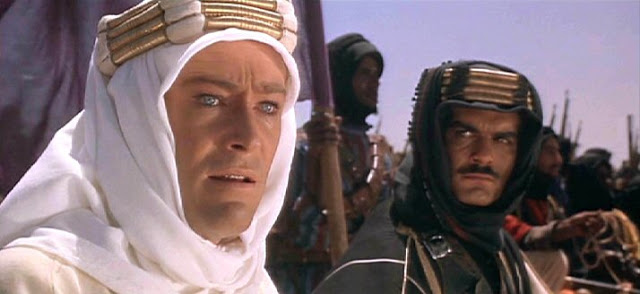
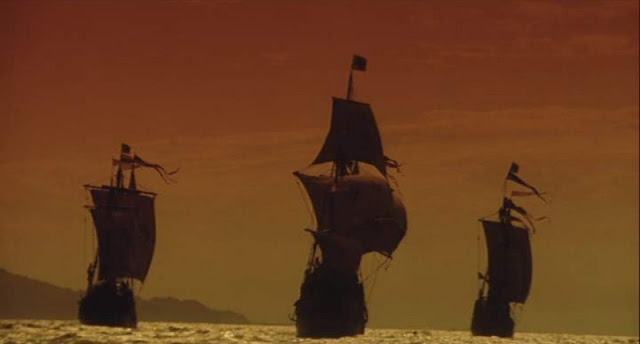
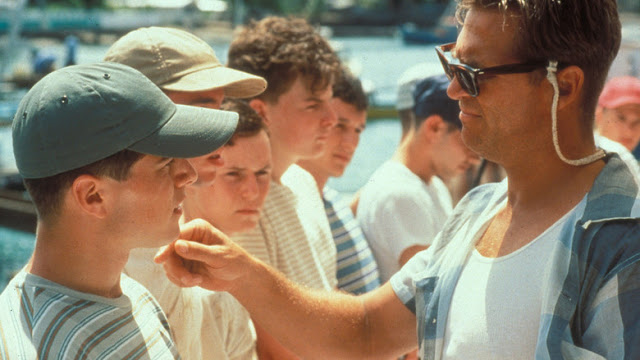
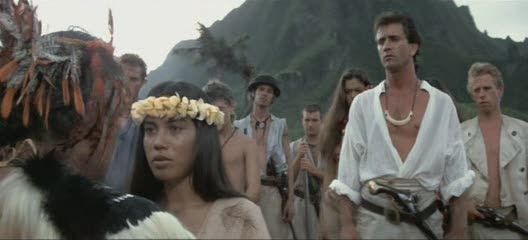
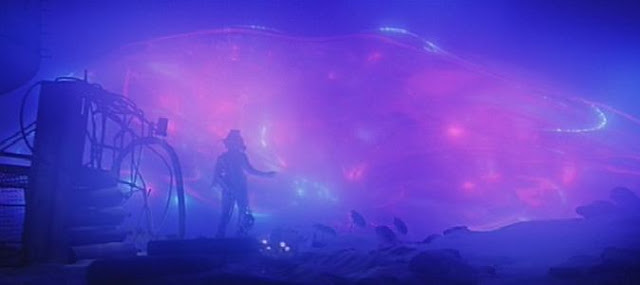
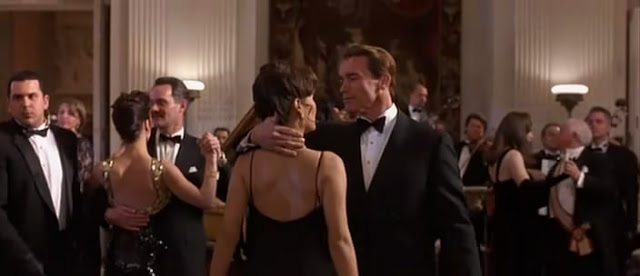
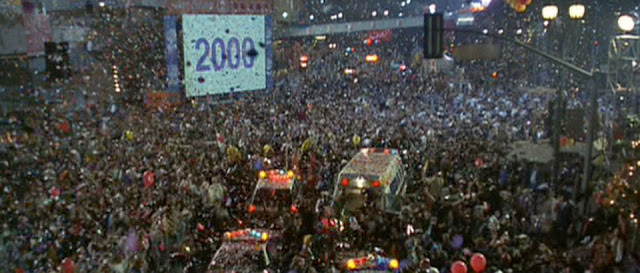
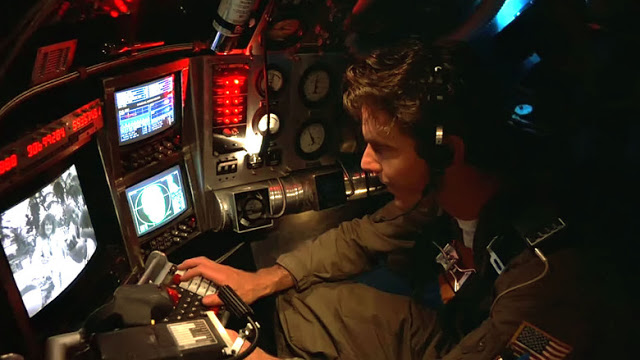
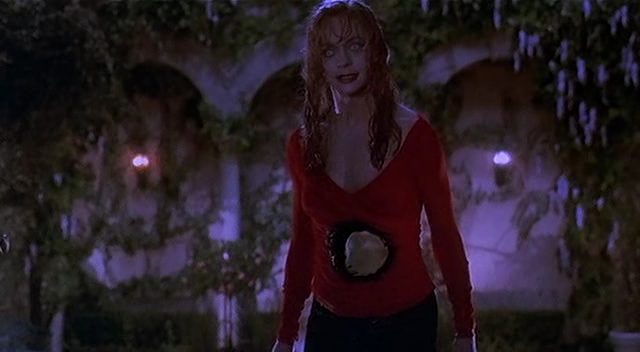
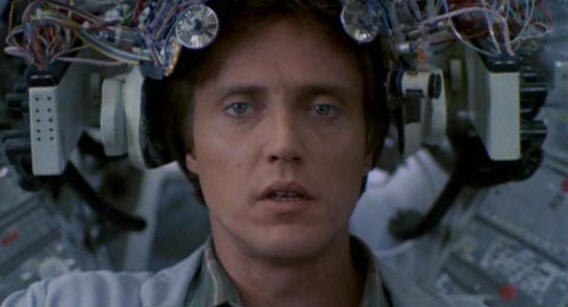

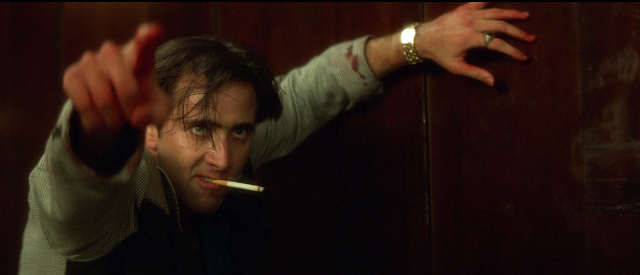

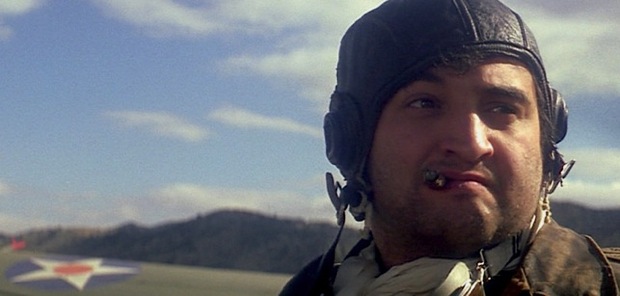
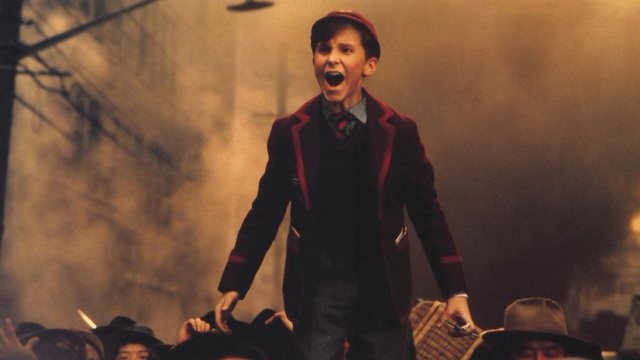
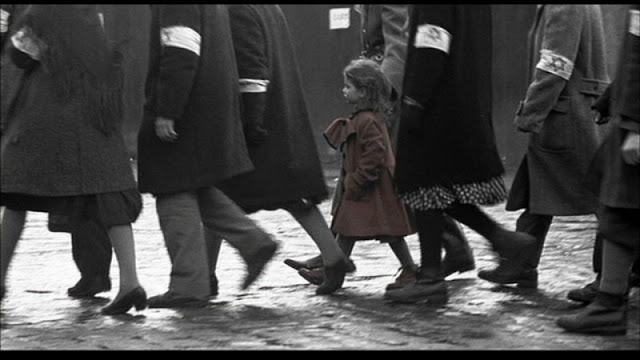

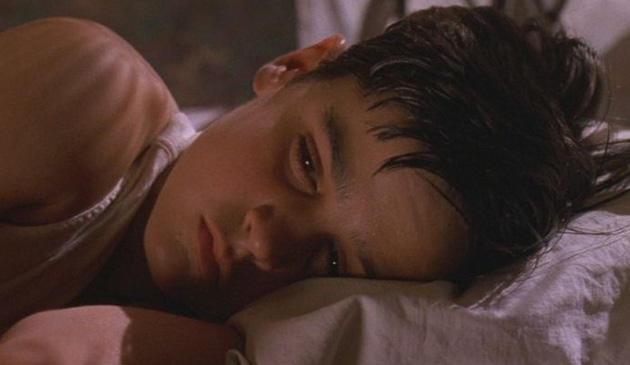
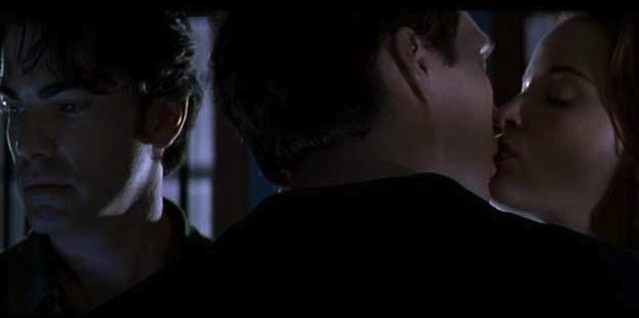
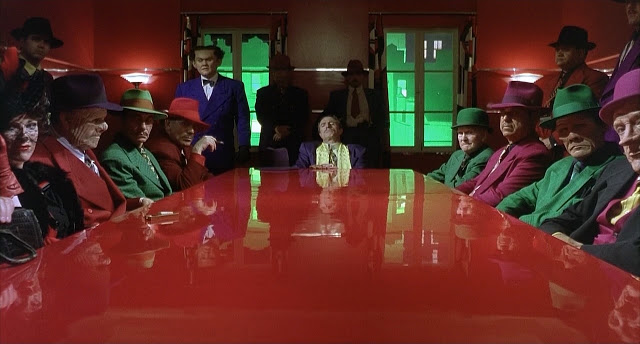
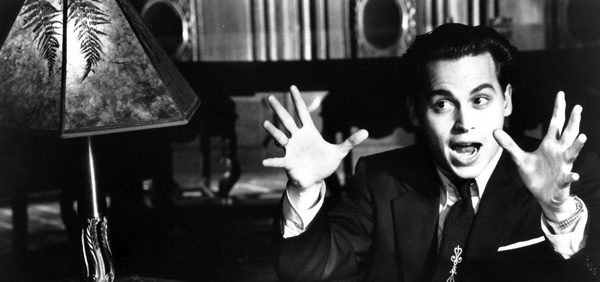
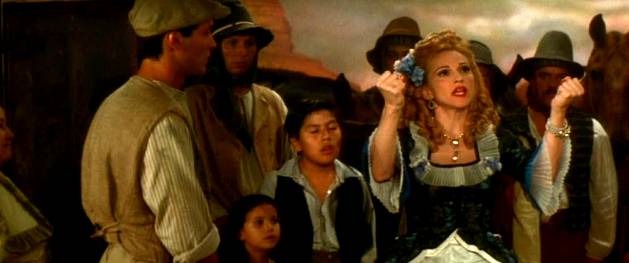
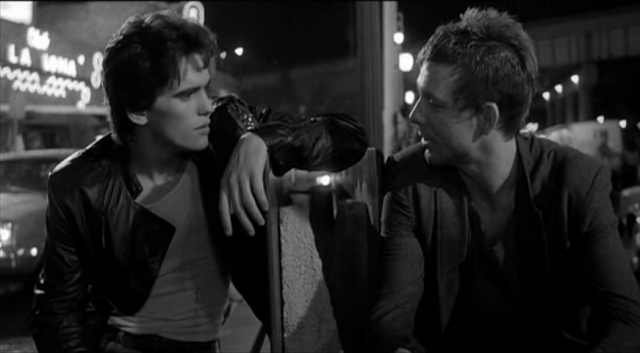
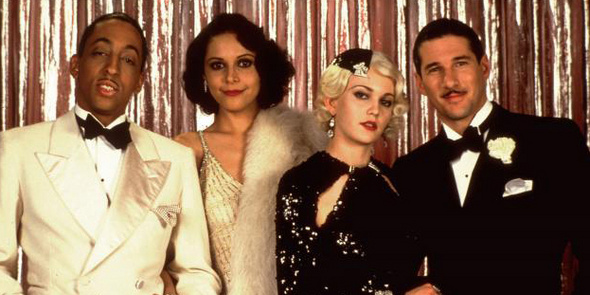
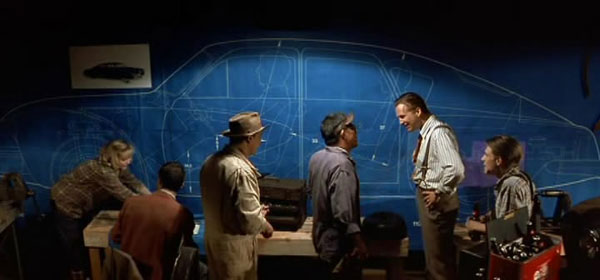
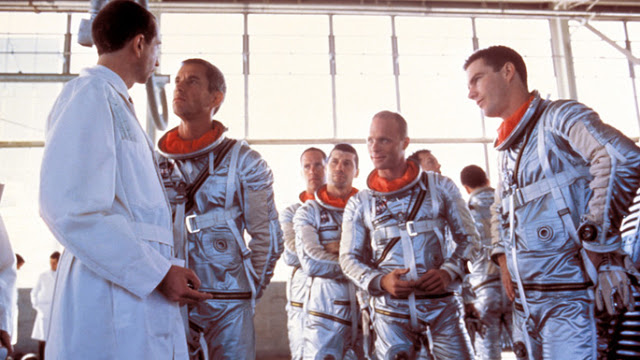







3 Comments